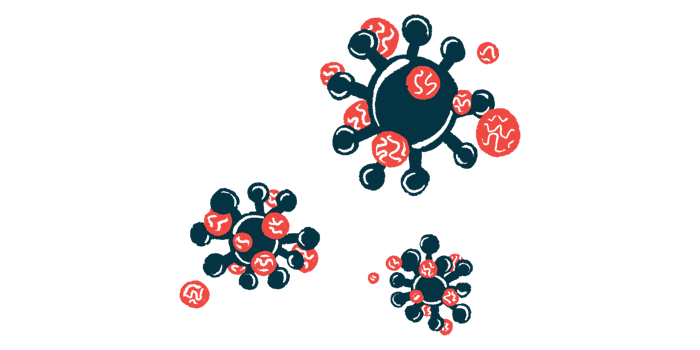COVID-19 Triggers Relapse in Woman With aHUS: Case Study
Treatment with Soliris proved ineffective in resolving her disease

COVID-19 might have triggered a relapse of atypical hemolytic uremic syndrome (aHUS) in a 36-year-old woman, according to a recent case report.
Despite treatment with Soliris (eculizumab), the patient ultimately died. However, a literature review conducted by study authors revealed nine other cases of COVID-19-associated aHUS and showed that Soliris is generally effective.
“The effectiveness of eculizumab treatment in aHUS may depend on the degree of respiratory compromise,” the authors wrote.
The report, “COVID-19: A Rare Cause of Hemolytic Uremic Syndrome,” was published in Cureus.
aHUS is a form of thrombotic microangiopathy (TMA) — a group of diseases wherein blood clots that form in small blood vessels damage internal organs, such as the kidneys. The disorder is marked by hemolytic anemia, which occurs when red blood cells are destroyed faster than they are made, low platelet counts (or thrombocytopenia), and acute kidney failure.
An abnormal activation of the complement cascade — a network of proteins that help defend the body against bacteria and viruses — is the cause of aHUS. Overactivation of the complement system can result in severe inflammation and a strong blood clotting reaction.
Soliris, originally developed by Alexion Pharmaceuticals, is often used to treat aHUS. This antibody-based therapy suppresses the complement pathway and was shown to be effective at increasing platelet counts and improving kidney function.
Although most people with aHUS have mutations in genes that control the function of the complement cascade, certain triggers, such as an infection, are typically also needed for a person to develop the disease or have a relapse.
Now, a research team in Florida described the case of a woman who had an aHUS relapse triggered by COVID-19.
Her test for COVID-19 came back positive after she developed symptoms of an upper respiratory infection. Three days later, her blood oxygen levels dropped and she went into acute respiratory failure. Her kidneys also stopped working properly.
After being intubated and admitted to the ICU, the medical team performed a CT scan of her chest, which showed hazy gray areas (ground glass opacities) — signs typically found in COVID-19 pneumonia. No other infections were detected.
She was treated with dexamethasone, an anti-inflammatory medication, and started on urgent dialysis due to her poor kidney function.
Lab tests revealed she had very low levels of hemoglobin and haptoglobin — both signs of hemolysis, or red blood cell destruction — and high levels of lactate dehydrogenase (LDH), a marker of tissue damage. Red blood cell fragments, called schistocytes, which are characteristic of hemolytic anemia, were also detected.
“These findings suggested a [TMA] and likely, an exacerbation of aHUS,” the team wrote.
She was then restarted on Soliris and her symptoms initially eased, although she still required dialysis. As her anemia worsened, her doctors gave her four units of packed red blood cells. However, her respiratory status worsened and she died.
Nine previously reported cases of COVID-19 and aHUS were identified by the researchers through a review of the literature. Seven of them were of patients with no previous history of aHUS and two were relapse cases.
All patients were treated with Soliris and one was also treated with Ultomiris (ravulizumab) — another antibody-based therapy similar to Soliris. One patient with an initial diagnosis of aHUS and treated with Soliris died.
“Most cases described successful treatment of COVID-19 and aHUS with continuing treatment of eculizumab. Our case provides an unfortunate instance where continued eculizumab treatment was ineffective. This may be related to the degree of respiratory compromise,” the researchers wrote, adding that future studies on how COVID-19 contributes to conditions like aHUS are needed.
“Additional understanding of how these two disease states intertwine may allow for targeted treatment options within each individual diagnosis,” they wrote.







